It was on a chilly Fall day after a long, hot summer in Arizona that I boarded the plane to San Francisco attend the 2016 ACESCONNECTION conference. I think of this day and the day I first learned about the Adverse Childhood Experiences (ACE) Study as days that I will never forget- days that changed my life. I was (and continue to be) passionate about work in the trauma-informed space.
“Change culture and you change lives. You can also change the course of history. Many well-meaning social activists overlook this essential fact. They focus relentlessly on strategy, but strategy means nothing to our bodies and our lizard brains. When strategy competes with culture, culture wins–every time.”
~Resmaa Menakem, My Grandmother’s Hands No one can dispute Valorie Kondos Field’s record of winning.
Now is the time for taking action! We are all passionate about making the world a better place but we can sometimes struggle with how to get started. With so much trauma in the world right now, knowing where to start can seem overwhelming.
In this video, Lori shared how one Resilience Champion took a fundamentally different approach to the pandemic in her school and how that made all the difference for the children and families in the community. From how she managed academics to mental wellness needs of both students and staff, looking through the lens of a trauma-informed approach supported the resilience of the community.
At Origins, we encourage self-reflection as we navigate advocacy during this social justice revolution. While we are all in this storm together, we recognize the reality that we are not all in the same boat. In scrolling through social media this last week, I came upon a poem that speaks to this truth. The author is unknown.
Costco is out of toilet paper and CVS is out of cough syrup. Your group fitness class and your favorite restaurant are closed. Your cousin keeps posting memes on instagram about some conspiracy theory and your co-worker brags on about how she hasn’t been sick in years so she’s not worried about germs. This is not a nightmare. This is real life in 2020 thanks to COVID-19, aka the coronavirus.
On March 11th, three months from when the first cases of pneumonia were reported in China, the World Health Organization (WHO) declared COVID-19 a pandemic. With a composed and articulate delivery, WHO chief Dr. Tedros Adhanom Ghebreyesus expressed that this declaration could lead to a response of “unjustified acceptance that the fight is over” or “unreasonable fear.” He wasn’t wrong. With what seemed like an air of hope, he also reported that this declaration should not change the approach governments are taking to stop the spread, or flatten the curve.  Fear is quite the motivator. As we introduce in The Basics, fear can activate our stress response system (aka our survival brain) and when that happens, reason and logic can go out the window. We have a reaction to a real or perceived threat to safety that affects our body, thoughts, emotions, and behaviors. In this scenario, COVID-19 is the trigger that activates unique fears and responses in each person. For some, the response might be fight or flight. For others, it might be freeze or fawn. Some people get angry and might fixate on finding someone to blame, other people might feel overwhelmed and shut down completely or go on with life as usual, Still others feel guilty that people are suffering and turn to people-pleasing or caregiving. We adapt.
Fear is quite the motivator. As we introduce in The Basics, fear can activate our stress response system (aka our survival brain) and when that happens, reason and logic can go out the window. We have a reaction to a real or perceived threat to safety that affects our body, thoughts, emotions, and behaviors. In this scenario, COVID-19 is the trigger that activates unique fears and responses in each person. For some, the response might be fight or flight. For others, it might be freeze or fawn. Some people get angry and might fixate on finding someone to blame, other people might feel overwhelmed and shut down completely or go on with life as usual, Still others feel guilty that people are suffering and turn to people-pleasing or caregiving. We adapt.
You may be wondering, “so what am I supposed to do about it?”
First, we can take a trauma-informed approach when responding to one another during the COVID-19 pandemic. The Substance Abuse and Mental Health Services Administration (SAMHSA) uses the 4 R’s: realizing that each person’s history of trauma can affect them today; recognizing the ways people are thinking, feeling, acting as a normal response to an abnormal situation; responding with compassion and understanding (while still holding them accountable and practicing healthy boundaries for yourself); and reducing re-traumatization. The key principles of a trauma-informed approach include safety at the forefront.
Second, we can all practice getting and staying in our resilience zone. When we read news headlines or talk to a co-worker that seems to be communicating with exclamation points, it can be contagious. If we’ve had a life full of stress, trauma, and adversity, it can become even more difficult to distinguish between what is “reasonable” and “unreasonable.” Some of us may have a hard time putting our thinking cap on when emotion is in the driver’s seat. During times of high stress, feeling angry, guilty, and overwhelmed makes perfect sense given the person’s life experience. But staying staying there or allowing those emotions to inform our behaviors can impact our health.
Strengthening our “resilience muscle” starts with awareness. What am I noticing in my body, thoughts, emotions, and behaviors? Am I inside or outside of my resilience zone? When I read a headline or hear some news and the words are upsetting, what is my reaction? Do I stockpile toilet paper or do I think about ways I can continue to connect with others or support those who are more vulnerable during a time when physical distancing is a necessary intervention? That balance will be the difference between succumbing to the frenzy and chaos and moving through this pandemic with resilience.
To learn more about what your baseline in the window of tolerance might be…
GET YOUR ACE SCORE HERE or TAKE A RESILIENCE INVENTORY HERE
Image credit: TW @SIOUXSTEW based on Thomas Splettstöber TW: @SPLETTE and the Centers for Disease Control and Prevention
______________________________________________________________________
Start here to develop a shared language
The Basics is a two-hour workshop helps introduce to you and your staff establish a common language around trauma-informed principles and practices so everyone can develop a culture centered on resilience-building together.
Begin by exploring the impacts of toxic stress on both clients and staff, while deepening your team’s understanding of ACEs, as well as the role of systemic and intergenerational adversity. Finally, learn more about the concept of resilience, identify how protective factors can help heal the impacts of trauma, and discuss how resilience can be built and sustained within an organization.
Note: Action team members should participate in this workshop before “graduating” to The Resilience Champion series.
I’m ready to build a resilient organizational culture
The Resilience Champion is a six-week course is for leaders who want to integrate a trauma-informed approach in their setting and start building a resilient organizational culture. In the Resilience Champion series, your action team (who will lead your implementation) will participate in a six-workshop series which helps translate and operationalize the key concepts of a trauma-informed approach in your unique organization. Together with your colleagues, you will develop a shared foundation, specific goals, and concrete steps to create and sustain a resilient culture.
“The implementation of a trauma-informed approach is an ongoing organizational change process. A ‘trauma-informed approach’ is not a program model that can be implemented and then simply monitored by a fidelity checklist. Rather, it is a profound paradigm shift in knowledge, perspective, attitudes and skills that continues to deepen and unfold over time.”
–The Missouri Model: A Developmental Framework for Trauma-Informed Schools Initiative Publication
My middle child loves all things games. Board games, card games, video games…we play a LOT of games together. She even loves game shows. One of our favorite things to do together is to watch some of the classic game shows from the 1980s (thank you, Amazon Prime video).
One of our favorite games over the years has been Jenga. For anyone who has not played Jenga before, players take turns removing a block from a tower made from 54 blocks. The player has to then place that block on top of the tower, creating an increasingly unstable structure. If the tower topples when you are placing your block, the other player wins. One thing my daughter learned very quickly with Jenga is that pulling a piece out from the bottom is very dangerous.
In other words, strong foundations are critical.
I think about this game a lot in relation to our work at Origins. One of our mantras is that a trauma-informed approach is much more than completing a checklist of tasks. Sure, there are a lot of interventions that have the potential to build resilience as standalone initiatives–mindfulness techniques, restorative practices, trauma screenings (when done thoughtfully and responsibly), to mention just a few. These interventions can indeed have a big impact. But that impact can be so much more powerful and so much more sustainable if they are implemented within the context of a strong foundation.
Going back to the Jenga analogy, before introducing a change to the Jenga structure, we must first “set the table” with a solid foundation. If the bottom layers of the tower were built in a rush or were missing a brick or two, making changes to the rest of the structure can be dangerous.
So what does a strong foundation for a trauma-informed approach look like? We think there are at least five critical components: the language, the people, the why, the culture, and the plan. We will be exploring all of these in more detail in a series of blogs over the coming months, but let’s look at each of them briefly.
The Language
First, the language. Everyone–including the CEO or the Executive Director, middle management or program staff, and support staff–needs shared language. As an example of what we are talking about, let’s take the language that might be used to describe someone who is not taking the medications prescribed by their doctor. The medical field might have traditionally labeled this patient as non-compliant. A trauma-informed approach would encourage a discussion about why the patient is not taking the medication in the first place. Language matters. For this reason, we created The Basics, a training session that provides a shared language for the basic science behind the ACEs framework and what it means to develop a trauma-informed and resilience-building approach. (We talk more about the importance of language in our blog here)
The People
Second, the people. Relationships can be a source of trauma and a solution. Strong relationships built on inclusivity, collaboration, and teamwork help us build resilience and improve experiences and outcomes. A trauma-informed approach requires building effective teams and evaluating how we can create community, both within and outside of organizations. Who is on your implementation team and who is leading it? Are you building relationships with community partners? Who has a seat at your team’s table and who might be missing? How will you meaningfully include the voices of those who are missing from your table? Even better, how can you set a place for them? As the saying goes, teamwork makes the dream work. And integrating a trauma-informed approach is definitely a team sport.
The Why
Third, the why. Understanding “why you do what you do” is an important brick in the foundation and can help articulate a clear vision and mission. Knowing why that Jenga tower is being built is a critical piece that supports its sustainability. As said by comedian Michael Jr. “When you know your why, your what has more impact because you’re walking in or towards your purpose.”
The Culture
Fourth, the culture. All organizations, communities, and families have a culture, whether it has been created intentionally or not. Taking the time and creating the space to be intentional about building a culture that supports and sustains your vision and mission is essential. As management guru Peter Drucker reminds us, “culture eats strategy for breakfast.” Part of being intentional is articulating a set of values for your organization or community that will support trauma-informed principles and practices and a resilience-building approach. Those values will help guide your implementation.
The Plan
Last, and certainly not least, the plan (which is what everyone always asks for!). Operationalizing a trauma-informed approach requires a concrete implementation plan with specific goals and objectives. A good implementation plan starts with an assessment of what the organization is already doing to integrate the approach and identifying opportunities for improvement. Prioritizing these findings and translating them into concrete goals is critical to getting out of the starting gate with this approach. All of this requires an appetite for risk-taking and a tolerance for mistakes.
These five things–the language, the people, the why, the culture, and the plan–don’t look very different from the necessary steps for any sustainable planning process. Indeed, a trauma-informed approach doesn’t exist in a vacuum and can’t be separated from foundational planning work.
We explore all of these concepts in much more detail in our Resilience Champion Certificate program (and will also be doing so in our upcoming blog series!). This self-paced course (which includes access to The Basics) will guide you as you move from trauma-aware to trauma-informed and trauma-responsive. You and/or your team will work through one section each week to help you establish a foundation, create goals, and identify concrete steps you can take to sustain a trauma-informed and resilience-building approach in your specific setting.
Strong foundations matter in organizations and in games. I’ve reached the point where my tween daughter beats me in most games we play (and I am definitely not the type to let her win) with a few notable exceptions. Coming closer (without going over) to the correct prices when we watch The Price is Right together is one of those exceptions. I attribute that to my decades of experience going to the grocery store. And that foundation gives me the edge.
I remember my enthusiasm when I first stumbled upon the Adverse Childhood Experiences (ACEs) study. Coming from a healthcare background and frustrated by the lack of focus on upstream prevention, I remember how excited I was to learn about this “new” way of thinking about health and behavior–a way that focuses on root causes. In my eagerness to learn as much as I could about the emerging trauma-informed care movement, I brought this topic up to as many people as I could to learn more. In one of those conversations, something that a colleague with a school-based mental health background said really struck me: “None of this is new–we have been talking about these concepts in school-based mental health for decades. It’s just new language.” That point has stayed with me since.
/
Sitting on my bookshelf in my office is a framed copy of Time Magazine from April 14, 1997. On the cover is a picture of Ellen DeGeneres with the headline “Yep, I’m Gay,”
/
As one year comes to an end, the tradition of creating resolutions for ourselves in the next begins. How do you decide on what goal to work towards? This year, my 2019 resolution is going to come from looking back on 2018. I used the passion planner this year, a combined journal and organizer, so the highs and lows were easy to identify. The highlights include completing my coursework at school, setting clear boundaries with my time, exercising, and cutting back on some not helpful habits like too much wine and too many late nights. These goals give me concrete actions but why do I want to do them? What is my purpose? How do those “whats” fit into my “why”?



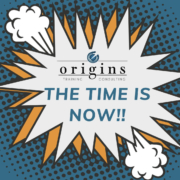
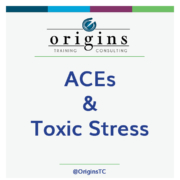

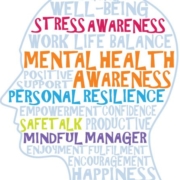







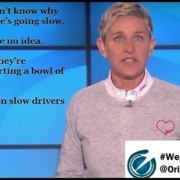
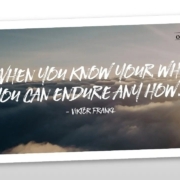


 Getting Started: A Guide from Trauma to Resilience
Getting Started: A Guide from Trauma to Resilience